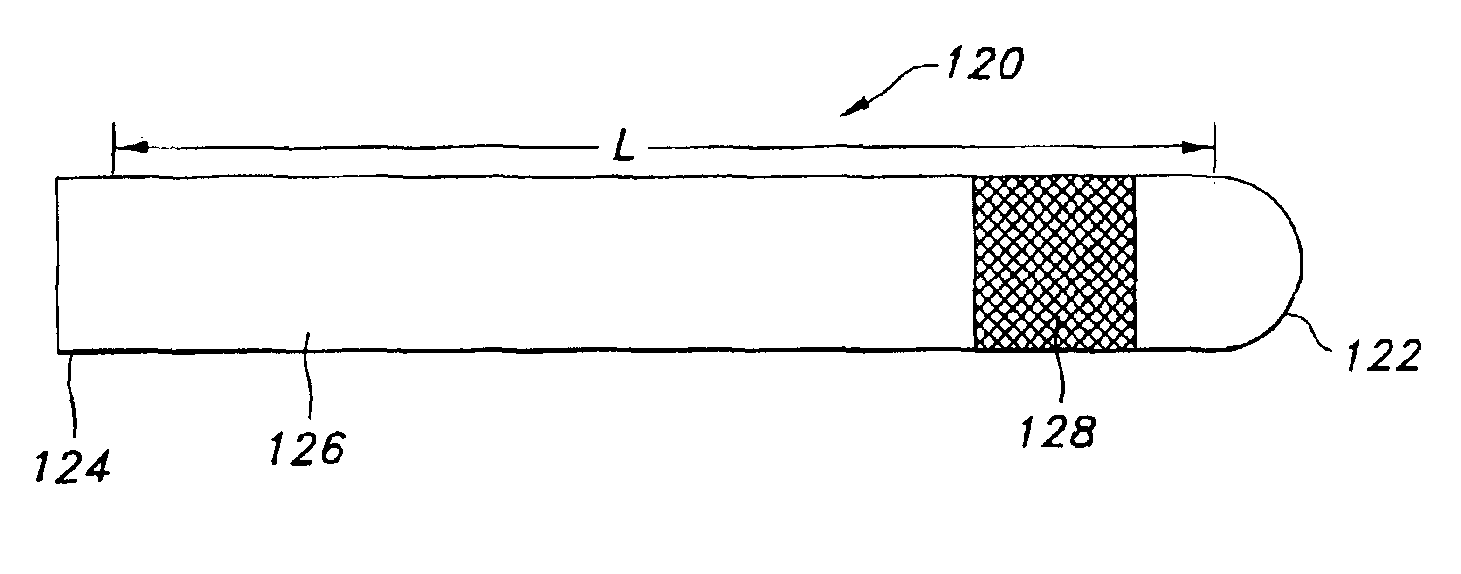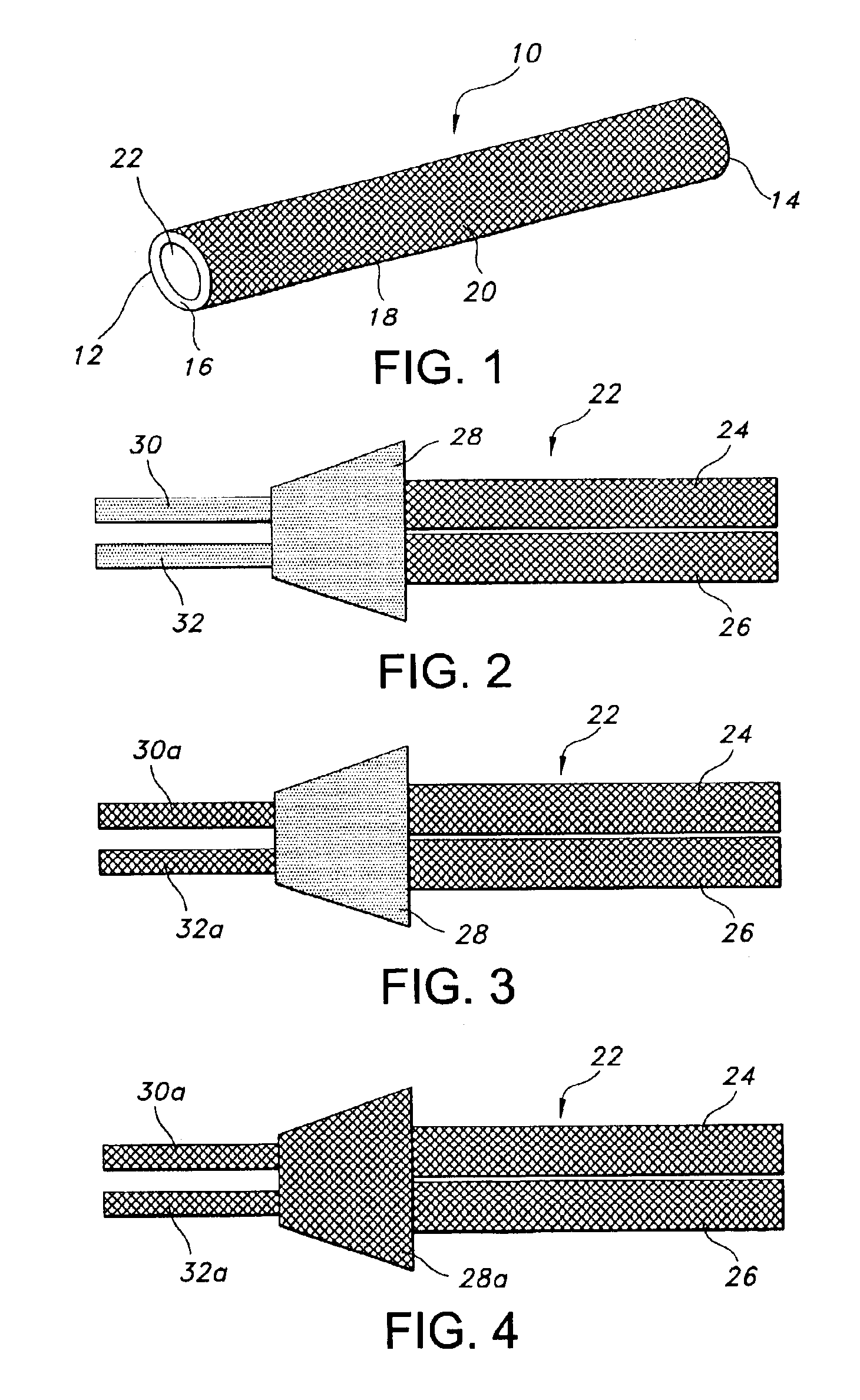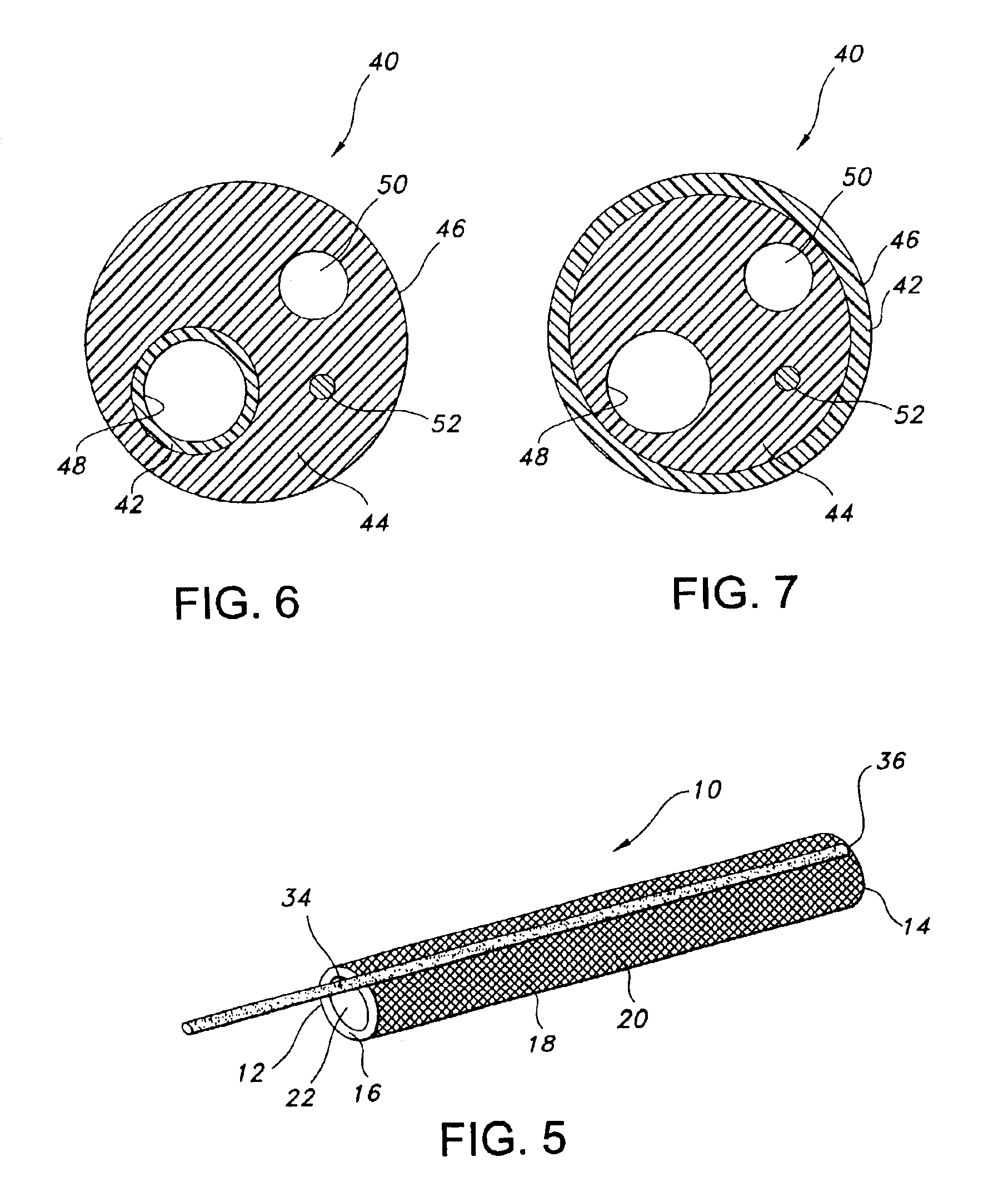Intraluminally placeable textile catheter, drain and stent
- Summary
- Abstract
- Description
- Claims
- Application Information
AI Technical Summary
Benefits of technology
Problems solved by technology
Method used
Image
Examples
Embodiment Construction
[0055]The present invention is a textile device that is intraluminally pushable and placeable into a body lumen of a patient. As used herein, the phrase “body lumen” and its variants refer to a blood vessel, a bodily organ, or a bodily tube. Moreover, as used herein, the term “intraluminally” and its variants refer to within a body lumen. Such placement is typically performed through non-invasive or minimally invasive procedures. In other words, such devices are intraluminally or intratubally placeable through percutaneous or orificial means. Examples of such devices include, but are not limited to, hemodialysis catheters, central venous catheters and catheters, stents or tubes for peritoneal dialysis, biliary drainage or drainage of malignant ascites.
[0056]The textile device of the present invention includes a hollow, elongate tube, such as tube 10 as schematically depicted in FIG. 1. As used herein, the term “textile” and its variants refer to a structure of interlocked fibers for...
PUM
| Property | Measurement | Unit |
|---|---|---|
| Angle | aaaaa | aaaaa |
| Angle | aaaaa | aaaaa |
| Pressure | aaaaa | aaaaa |
Abstract
Description
Claims
Application Information
 Login to View More
Login to View More - R&D
- Intellectual Property
- Life Sciences
- Materials
- Tech Scout
- Unparalleled Data Quality
- Higher Quality Content
- 60% Fewer Hallucinations
Browse by: Latest US Patents, China's latest patents, Technical Efficacy Thesaurus, Application Domain, Technology Topic, Popular Technical Reports.
© 2025 PatSnap. All rights reserved.Legal|Privacy policy|Modern Slavery Act Transparency Statement|Sitemap|About US| Contact US: help@patsnap.com



